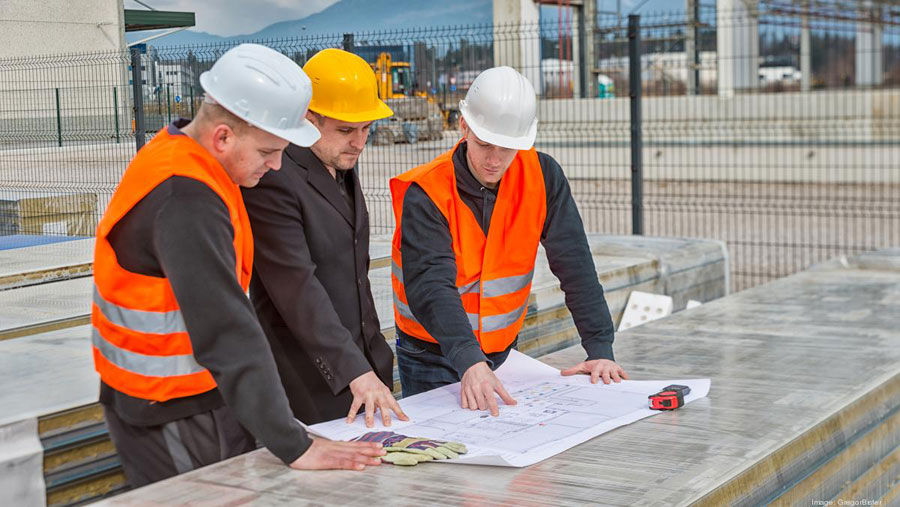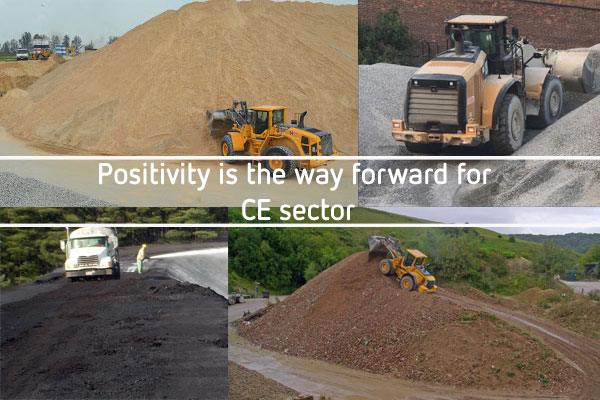Builders were constructing 31 kilometers (19.3 miles) of roads a day before Prime Minister Narendra Modi ordered the lockdown starting March 25. Not only that several housing, industrial, irrigation and many other projects were also in full phase. Then the lockdown happened, stalling every project that was in progress. This is a setback of course but every crisis brings with it some unseen opportunities. Every crisis also tests the limits of our resilience. The construction equipment sector has a history of facing challenges and emerging out of it gracefully. The construction sector was in a slump between 2011 till 2015 with demand for construction equipment witnessed a complete collapse, the sector managed to grow post-2015 and the signs were good.
Any kind of crisis can be good. It wakes you up. The construction equipment sector is facing challenges but with the correct planning and working with unity, this too can be overcomed. We must look towards positive ways to address these challenges and frame strategies for the way forward. Discussed below are strategies and approaches through which we can achieve a positive solution.
Resuming unfinished road and industrial projects
The focus at the moment should be on present unfinished work. Several projects were halted, the target should be to finish off those projects and then undertake newer projects, the government too is providing aid in this. Work on about 70 percent highway projects underway has resumed onwards with the government allowing the partial lifting of the lockdown for certain sectors amid the fight to contain the Covid-19 outbreak. As the ministry of home affairs (MHA) made way for lifting curbs on certain sectors to get economic activity restarted, construction activity is still crawling, though it has started across various districts. Of around 375 projects for which permission was sought for the resumption of works, 260 projects have got the go-ahead.
Construction activities include roads, irrigation projects, buildings, and all kinds of industrial projects; MSMEs are permitted in rural areas. Places or construction sites within the limits of municipal corporations and municipalities, where workers are available on site and no workers are required to be brought in from outside, have been allowed to carry out activities, according to MHA guidelines. Road construction, which started in some areas after certain relaxations in lockdown, is expected to be more back-loaded, essentially putting the focus on completing contracts rather than bidding out new ones.

Hopeful of relaxation of new emission deadlines for sales stability
CE industry is a major source of economy in the country and now more than ever the people need it the sector stabilised. CE industry is, therefore, planning to approach the government to delay that implementation of emission norms as in the current scenario this will worsen wheeled equipment sales. CE industry’s BS-IV is equivalent to BS-VI norms for automobiles and that is going to get implemented on wheeled equipment from October 2020. This also means that our industry will move from no regulation to stringent emission standards. Therefore, the impact on the prices of wheeled equipment will be very high from October onward. This will result in fewer sales of wheeled vehicles and there will not be any growth in this category during the financial year 2020-2021. So the sector is hopeful with the approach and if everything goes well, it would bring great relief for the construction manufacturing sector.

Framing a relaxed rental and emi terms
The renting or leasing of construction equipment has been on the rise, owing to the equipment cost and the cost of the maintenance process. Apart from the cost, there are also other benefits associated with renting the construction equipment. Renting construction equipment not only saves the cost of buying new equipment but reduces the incurrence of expenses such as labor cost, maintenance cost, and operational costs. So, it is of no surprise post lockdown there would be a demand for rental equipment as everyone would prefer to use the equipment on rent and save money. Associations and financial institutions should take charge and offer a relaxation package for rental plans. These bodies must provide OEM’s and manufacturers with well-planned financing options. The rental market is going to play an important role in recovering the losses. A well-planned financing option would provide a huge relief to both buyers and OEM. There is also a section that relies on EMI.NBFC, Banks and other financial institutions must frame strategies to relax EMI equipment buyers. They should frame buyer-friendly terms and conditions.

Encouraging MSME and OEM partnership
MSMEs are a real driving force in the construction sector, devoting time to improve their technical expertise and pioneering groundbreaking technologies that push the boundaries of innovation in the industry. What they lack are funding and scale, herein OEM plays a pivotal role. With the right funding and opportunities, they can create newer boundaries. OEM’s need to encourage them as these significant developments could enable liquidity inflow. There is a need for support among MSME, OEM and other stakeholders post the lockdown.

Make in India’ to bolster domestic manufacturing
The government will aggressively push its ‘Make in India’ objective post-Covid-19 lockdown with a multi-pronged strategy –policy and fiscal incentives to existing and prospective domestic and foreign investors, duty protection to discourage imports of finished goods and handholding to Indian entrepreneurs in challenging monopoly. The new opportunity is in sync with India’s ongoing ‘Make in India’ initiative. Fresh policy decisions and fiscal incentives will be announced to take it further after the lockdown is eased. The new incentives are aimed at burnishing India’s attraction as an investment destination for manufacturing companies. OEM’s must focus on manufacturing India based products which can further attract large-scale localization. We need to be self-dependent rather than dependent on export. Indian based companies should rely on their plans on local vendors to avoid future adversity.

The mining sector is already working and needs a push
In an order dated March 24 by the state’s Naveen Patnaik government, production, supply and distribution of coal, power, steel and fertiliser, operations of mines – iron ore, coking coal, thermal coal, limestone, dolomite, manganese and chromite – as well as running of ferro alloy and pellet plants (which supply raw material to steel plants) were termed “essential services” and exempted from the shutdown. The central Indian mining states have deployed a slew of legislation to continue mining operations. The Odisha government has invoked the Epidemic Diseases Act of 1897 and issued Orissa COVID-19 Regulations, 2020 under it. These regulations allow the government to exclude “essential services” from any lockdown restrictions. The steel ministry and companies like CIL, JSW have relied on this law to keep their operations going at this time. The mining sector, therefore, is in action and coping up with following necessity guidelines for health safety.

Reframing Construction activity Strategy
A strategy is important to any goal because it can provide an overall strategic direction in areas like financial strategy, marketing strategy, organizational development strategy etc. to achieve success in execution. Union Minister of Road Transport and Highways Nitin Gadkari has already asked officials to figure out ways to restart work at construction sites where labourers are still present. A meeting was held on April 8 to discuss the way forward to begin work on such big highway projects, starting April 15. Among the projects that can be restarted at the earliest is the Dwarka Expressway project, where work can resume as soon as there is a nod from the government. Gadkari is already in talks with the Prime Minister’s Office to gradually lift restrictions on construction work in areas where COVID-19 cases have not been reported. The official has informed that more than 50 percent of the labourers working at large project sites have not migrated back to their native places and can help with restarting construction activity.

Monitoring Construction Site Remotely
The pandemic has taught us a very important lesson, that nothing is permanent and no matter how hard it is, work must go on. In the light of ongoing epidemics, one thing that has opened the eye for the community as a whole is that accepting digital tools is no more a choice but a necessity. Working from home is no longer a luxury for the modern business. By using the right tools, your remote team will be more efficient and productive. Construction tracking software for defect management and construction documentation is here to stay. When you’re managing projects and teams in different locations, it can be harder to stay on top of tasks and deadlines.

Conclusion
There is a need to bring optimism in work culture post lockdown. With the emphasis on indigenization, the businesses can fulfill domestic requirements with tailored and cost-effective options. This will be a great help for the suppliers to improve margins and costs. The success of the construction ecosystem will depend on the tight collaboration among the industry, government and policymakers to ensure that the challenges of this sector are overcome thereby paving a roadmap of growth and progress of the country.
Image Source: virtualguardcctv.com, bizjournals.com, financialtribune.com, constructionexec.com, khl.com

